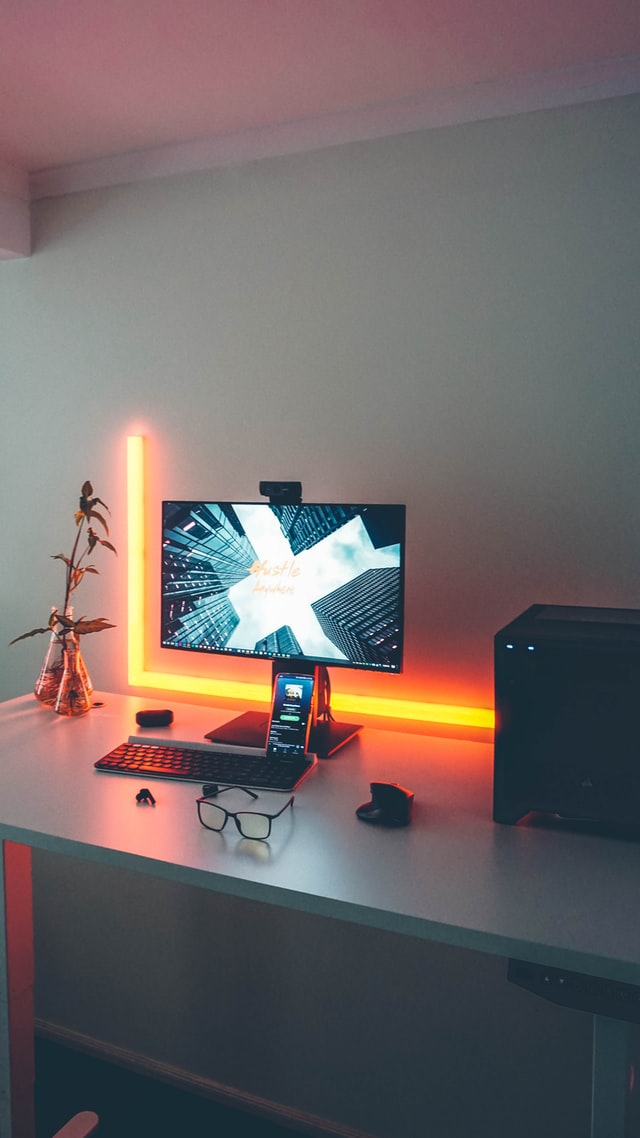Many audiophiles want to know how to wire a 4 channel amp to 6 speakers. How do you go about doing this? This is the question that you should be asking when considering adding more speakers to your audio system. The good news is that wiring up an amplifier for six speakers doesn’t have to be complicated. In this article, we’ll discuss the basics of wiring up an amplifier.
You may also like “How To Power Passive Speakers without an Amp“
An amp is designed to handle a certain amount of power, and when you wire more speakers with an amp than its capacity, there will be an increase in load. This can make your amplifier hot, which is not suitable for it.
What is a 4 Channel Amp?
There are four output channels on this amplifier, and it is designed to provide full-range power enhancement and amplification. Amplifiers with four channels are called stereo amplifiers.
Its purpose is to improve or optimize weak input signals, giving your car’s audio system a much-needed boost.
An amplifier with four channels can power at least two speakers. Furthermore, it is capable of simultaneously powering two subwoofers without any limitations.
Why is it Needed?
- Suppose you want to connect your vehicle’s front and rear speakers to improve the sound quality. A 4 channel amp allows you to accomplish this easily in that case.
- The four-channel amp also allows you to connect two speakers and a subwoofer simultaneously.
Is it Possible to Hook Up 6 Speakers to a 4-Channel Amplifier?
You need to remember that connecting a 4-channel amp to 6 speakers is not a good idea. It is best to connect 4 speakers with a four channel amp or buy a 6 amp channel. Nevertheless, wiring six speakers to a 4-channel amp is not impossible.
Why is it not a good idea?
Before we discuss how to connect your units, let’s discuss why it’s not a good idea to do so.
Here we go.
This may interest you “Best External Speakers For TV“
If you connect 6 units to a 4 amp, then you’ll have an increase in your ohm load. It occurs because the amp is smaller than the number of channels available to you. Please read to the end of this article if you do not have a 6 on 6 or 4 on 4 system to learn how to connect a mismatched amp channel and audio unit system.
An increase in ohm load can cause your amp to heat up. Amplifiers can usually handle more ohm speakers than the number of channels, but how they’re connected has advantages and disadvantages of their own.
If you continue to play your music at a high volume for an extended period, the resultant heat could cause damage to your system. Especially with heavy speakers, your head unit can only handle a certain amount of load.
What Do You Need to Connect 6 Speakers to a 4 Channel Amplifier?
The following is a list of what you need to do to connect 6 speakers to a 4 channel amplifier.
- A digital test meter
- Speaker connecting wire
- Electrical tape
- Electrical tape
- A pair of RCA adapter cables
- Zip ties
- Crimp tool
- Fuse and a fuse holder
How to Wire a 4 Channel Amp to 6 Speakers?
The most common ways to wire a four-channel amp to 6 speakers are:
Types of Arrangement:
- Parallel
- Series
It is important to note that each arrangement has its pros and cons, such as volume level, sound quality, duration, and heat produced during the process. Some tradeoffs are to be expected when you’re connecting 4 amp channels to 6 speakers.
You may also enjoy Best Speakers for Projectors
Let’s discuss these methods along with their pros and cons.
Series Connection
A 4 channel amplifier connected with 6 speakers is quickly and safely done using this technique. Using this method, one of the speakers serves as a connection point for the other speakers.
In a linear pattern or arrangement, you will connect one speaker to the following using wires.
A wire is connected from one end of the amplifier to the first speaker, then connected to the next. The last speaker is connected to the amplifier’s other end.
How does this work? On a single channel, two speakers are connected or powered in series.
Therefore, 4 of the six speakers will be connected to 2 of the 4 channels. Afterward, the remaining 2 speakers are connected to the remaining two channels individually.
- Connect your first two speakers to the first channel
- Connect the negative wire of the first speaker to the negative terminal of the first channel
- Connect the positive wire of the first speaker to the negative wire of the second speaker
- To connect the 2nd speaker, connect its positive terminal to the 1st channel’s positive terminal.
- Connect the 3rd and 4th speakers to the second channel by following steps 2 to 4. There are two channels (channels 3 and 4) and 2 speakers (5th and 6th speakers) remaining to be connected
- Connect the 5th speaker to channel 3
- Connect the 6th speaker to channel 4
Advantages
- There will be no additional costs involved.
- It will not be necessary to lower the impedance of the speaker load
- It is the most popular form of connection. Easy and safe addition and removal of speakers without additional costs
Disadvantages
- A disadvantage of wiring your speakers in series is that your speakers’ overall impedance will increase; resulting in the amp has to supply less power. As a result, the sound quality may not be excellent.
Parallel Connection
When two speakers with equal impedance are connected in parallel, they will produce half the resistance. If two 4-ohm speakers are connected in parallel, they produce a 2-ohm load on the head unit.
Also check our “BEST 1080P PROJECTOR UNDER 500“
The following is how you can connect your 6 speakers to a 4 channel amp in parallel:
- Connect the negative wire of speaker 1 to the negative terminal of channel 1 of the amplifier. Connect the negative wires of speakers 1 and 2.
- The positive wire of speaker 1 should be connected to the positive terminal of channel 1 of the device.
- Connect the positive wire of 2nd speaker to the speaker’s positive terminal.
- To connect speakers 3 and 4 to channel 2, this type of connection is used. Each of the two remaining speakers is connected to the remaining channels.
Alternatively, it is easier to combine the positive wires of speakers 1 and 2 first. Then, connect their negative wires to one channel of the amplifier.
Speakers 3 and 4 can also be combined in the same way and connected to the second channel. Lastly, the 5th and 6th speakers each connect to the remaining 2 channels.
The 2 speakers that are wired together can be connected to either the front or rear channels, depending on your preference.
Conclusion
A parallel or series connection of 6 speakers to 4 channel amplifiers is easy and secure. Parallel connections allow each speaker to be connected independently to the amplifier. Therefore, there will be a more significant impedance load.
Parallel contacts can cause the AMP to overheat due to the extra load but provide impressive sound quality.
Speakers are connected end-to-end by a series of connections. Despite its safety, it produces a lesser quality of sound.
FAQs
Question: Can I connect 6 speakers to a 2 channel amp?
Answer: Yes, you can connect 6 speakers to a 2-channel amp, either in series or parallel.
Question: What is the difference between a 2-channel amplifier and a 4-channel amplifier?
Answer: Two-channel amps allow you to connect with fewer speakers, while four channel amps allow you to connect with more speakers.












